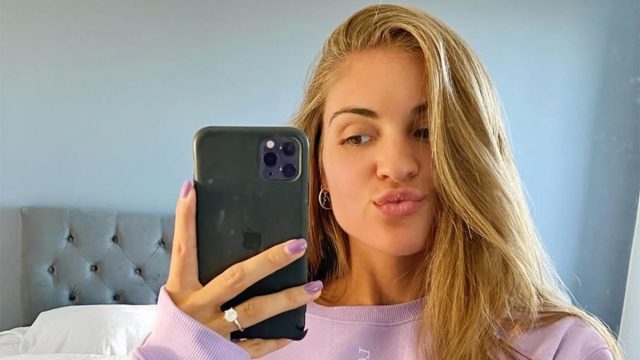Coach Lost 20 Pounds with These 5 Eating Habits

Are you struggling to lose weight but experiencing frustration? You don't need to complicate weight loss, says one expert. Maria Gad is a Fitness & Weight Loss Coach who uses her experience losing weight to help others. In a new post, she shares some simple tips on how to do it by changing up your diet. "5 eating habits that helped me lose 9 kg," she writes. "These small changes helped me stay on track and achieve my goals! Try them out and see how they work for you!"
Hydrate
Her first tip? Start the day on a hydrated note. "Hydrate first! Drink water as soon as you wake up and before or with every meal," she writes. According to the Mayo Clinic, hydration is essential for various reasons. Water helps eliminate waste through urination, perspiration, and bowel movements, keeps your temperature regular, lubricates and cushions joints, and helps protect sensitive tissues.
Snack Smart
You can eat in between meals, but make good choices. "Snack smart," Gad recommends. "Have a light snack before going out to avoid overeating later."
RELATED: 8 High-Protein Foods with Nearly Zero Calories That Melt Fat
Meal Plan
Her next tip? Plan ahead. "When dining out, check the menu in advance to make healthier choices. Stick to 2 out of 3: starter, main, or dessert," she writes. There is scientific evidence supporting the benefits of meal planning. Studies show that the more meals you eat prepared away from home, the higher your risk of cardiovascular disease, cancer, and early death. One study published in the International Journal of Behavioral Nutrition and Physical Activity found meal planning was associated with a healthier diet and less obesity.
Limit Alcohol
https://www.instagram.com/reel/DBrEZxev9MT/?utm_source=ig_embed&utm_campaign=loading
Don't drink your calories, says Gad. "Limit alcohol. A drink now and then is fine, but remember it's packed with hidden calories, can slow recovery, and mess with your sleep," she writes.
Sauces on the Side
Don't drench your food in sauce. "Sauces on the side" is a must, she says. "Ask for dips and sauces on the side to control portions and avoid unnecessary calories."
Eat Protein Oats
https://www.instagram.com/reel/C-iHdqvvYbj/?utm_source=ig_embed&utm_campaign=loading
You can still "eat delicious food AND still get results," she writes in another post. "Eating healthy doesn't mean sacrificing flavor or enjoyment. Here are 3 of my favorite meals that keep me on track while satisfying my cravings." The first? Protein oats. "Tastes just like cake! Perfect for sweet mornings. Just mix oats, cocoa powder, protein powder, and a splash of milk. Top with melted peanut butter and dark chocolate. You'll be in heaven!" she says.
Teriyaki Salmon Is Another Favorite Meal
Another one of her favorites is teriyaki salmon. "My go-to dish that I could eat every day! Marinate wild salmon in a teriyaki mix, bake it to perfection, and serve with rice and broccoli. It's both nutritious and indulgent!" she writes.
RELATED: 12-3-30 Walking Method: 20 Proven Tips to Lose Weight Faster
And, Halo Top
When it comes to sweet treats, you don't have to deprive yourself. "Yes, I eat dessert every day!" she says. "A tub of Halo Top only has 320 calories, making it a guilt-free way to satisfy my sweet tooth after dinner." And if you enjoyed this article, don't miss these 8 High-Protein Foods with Nearly Zero Calories That Melt Fat.




